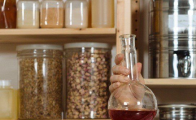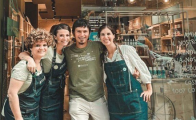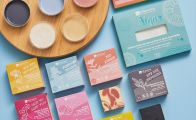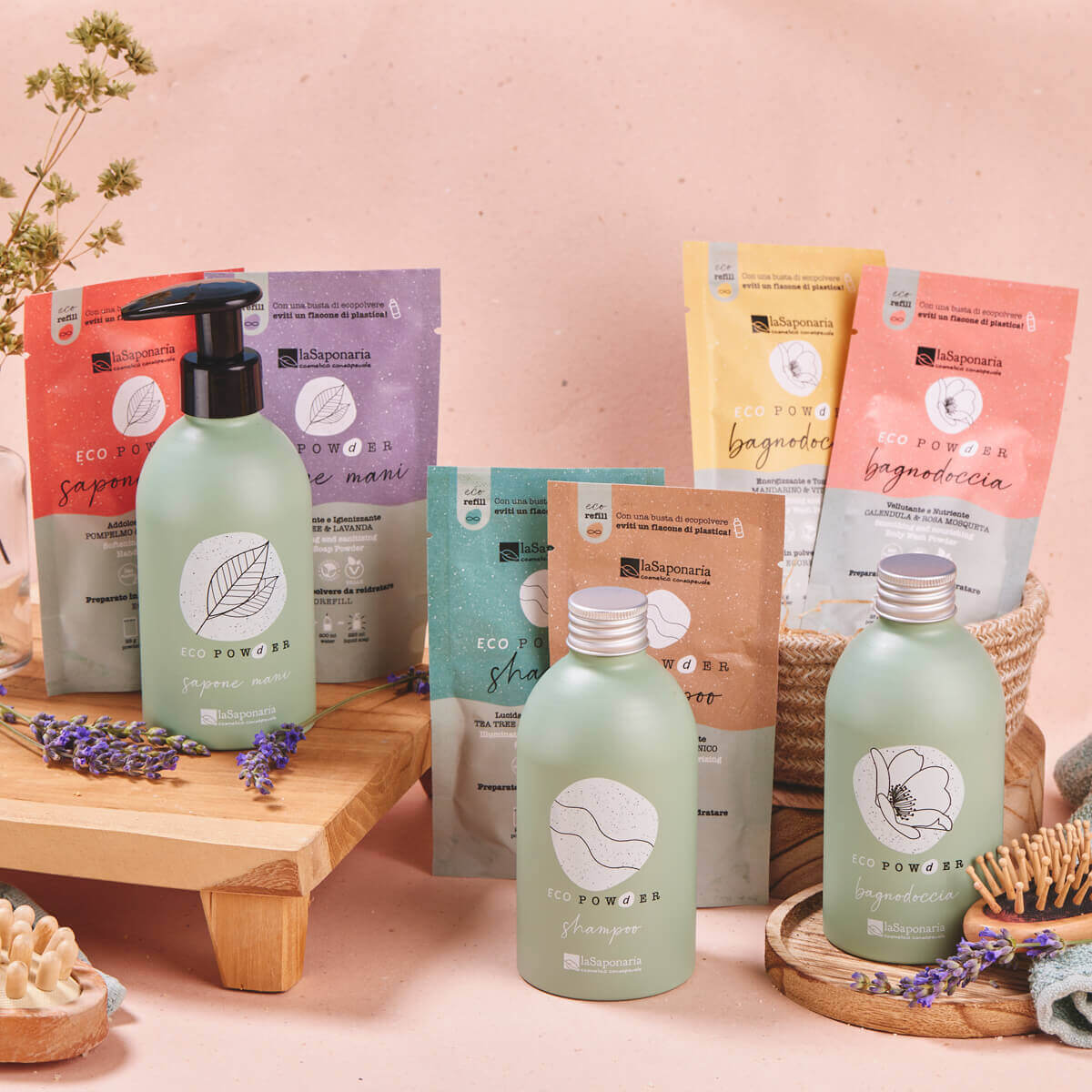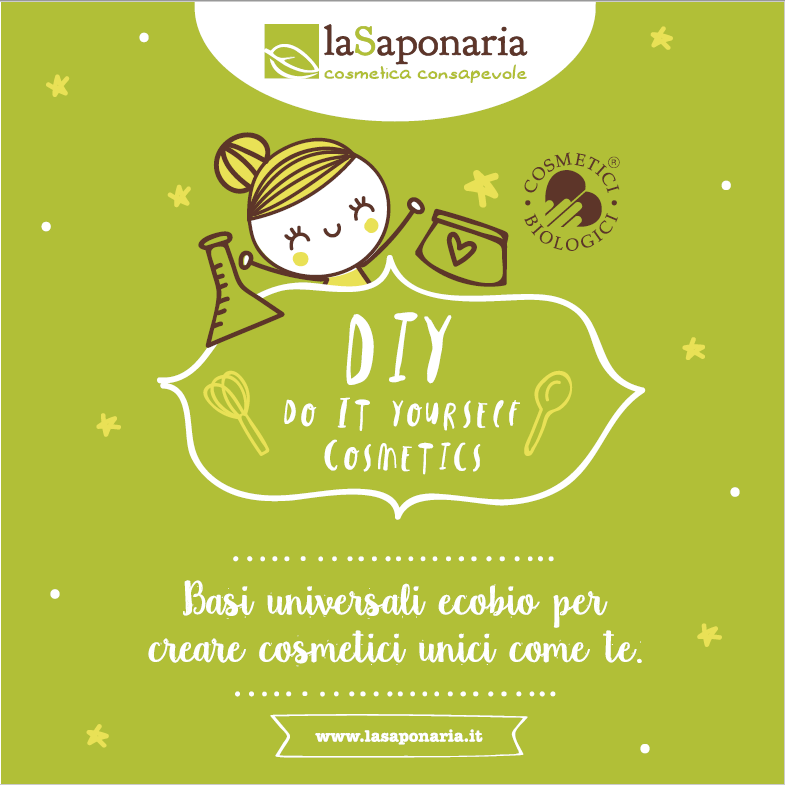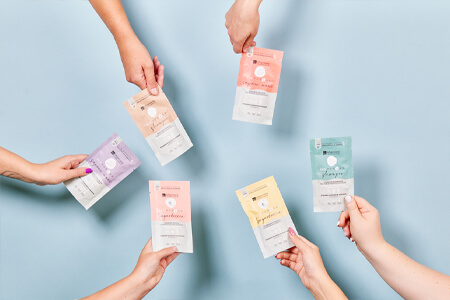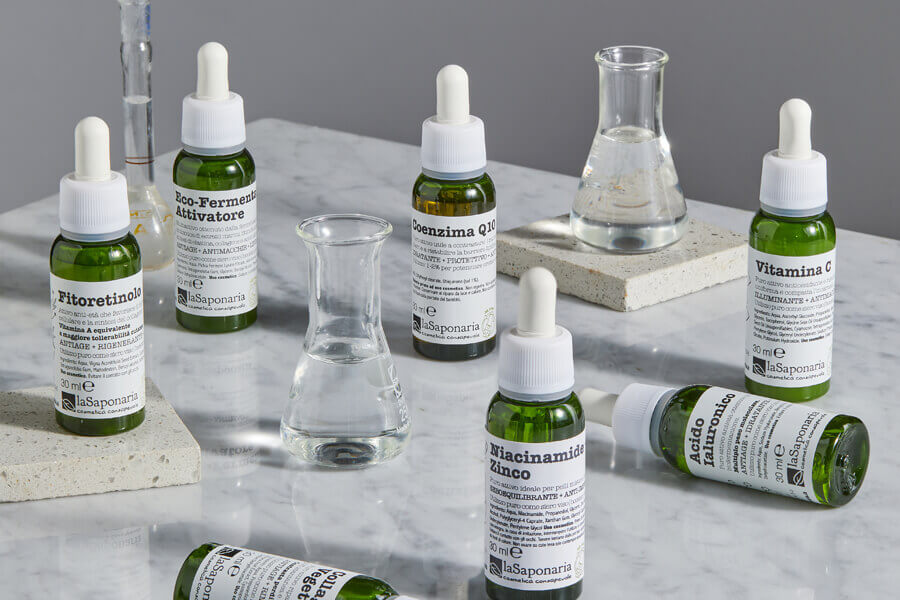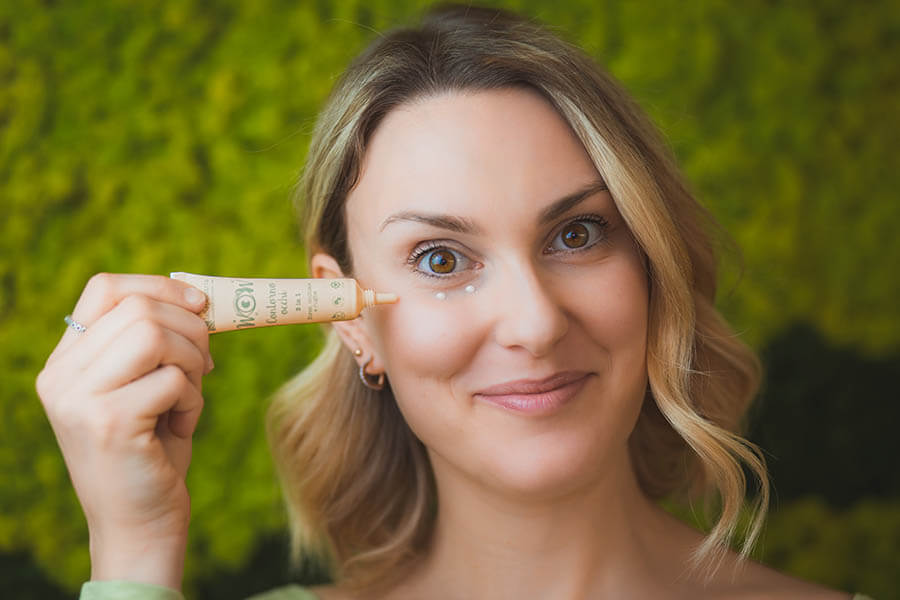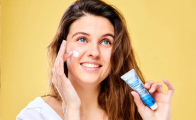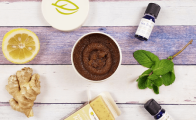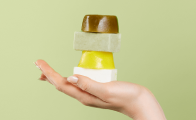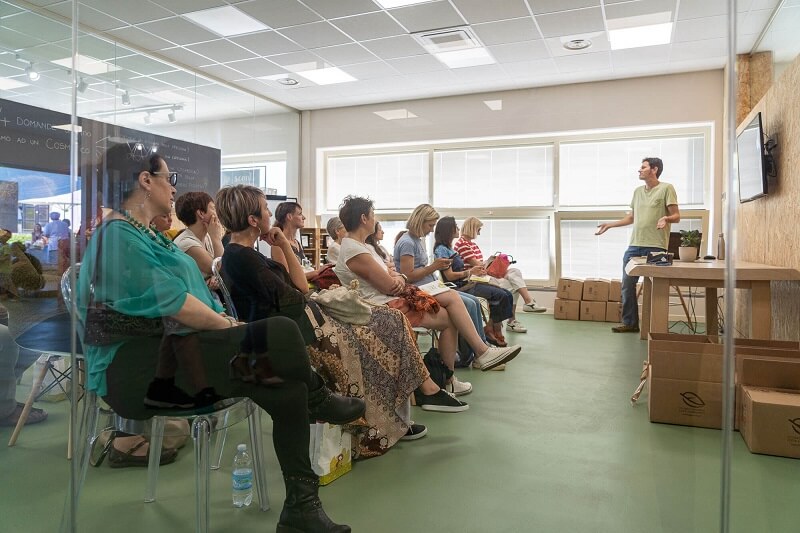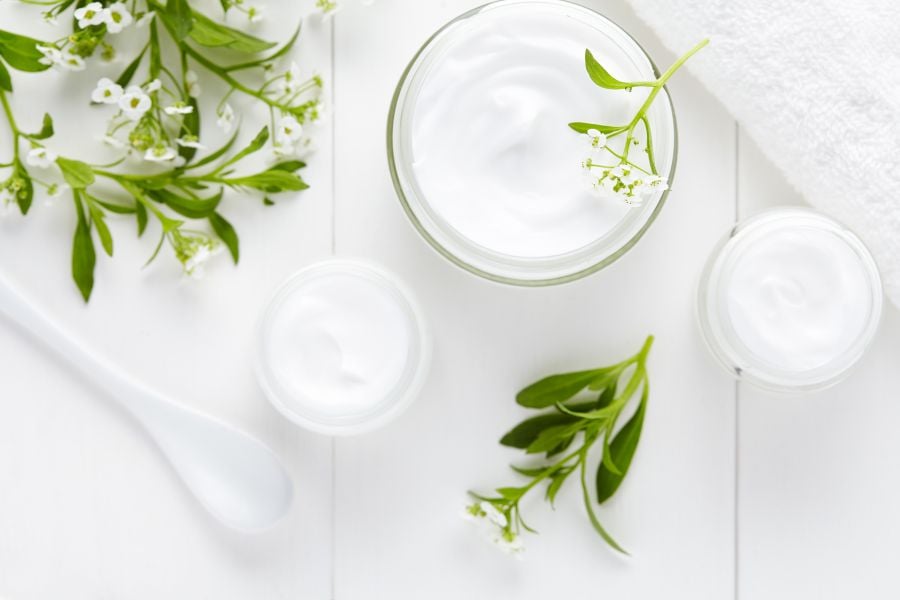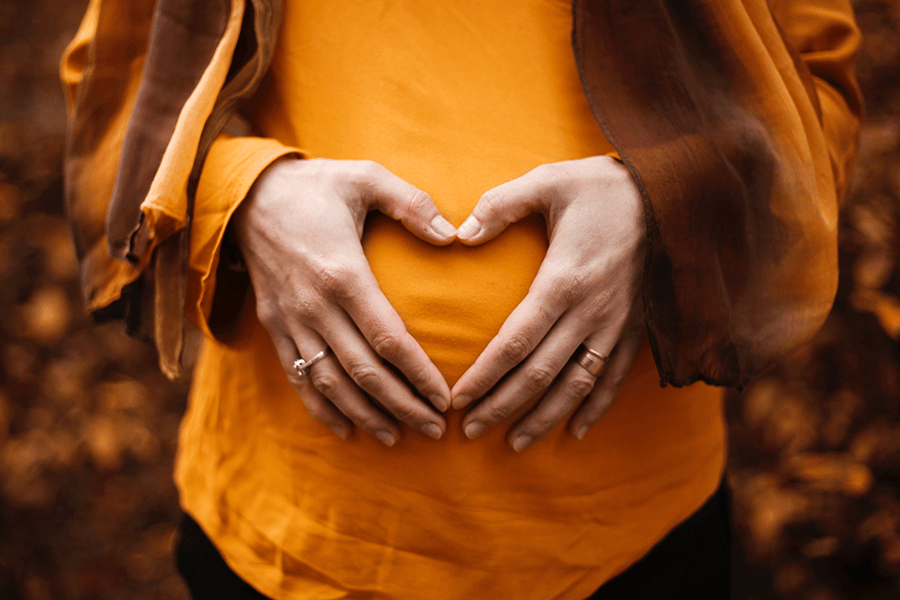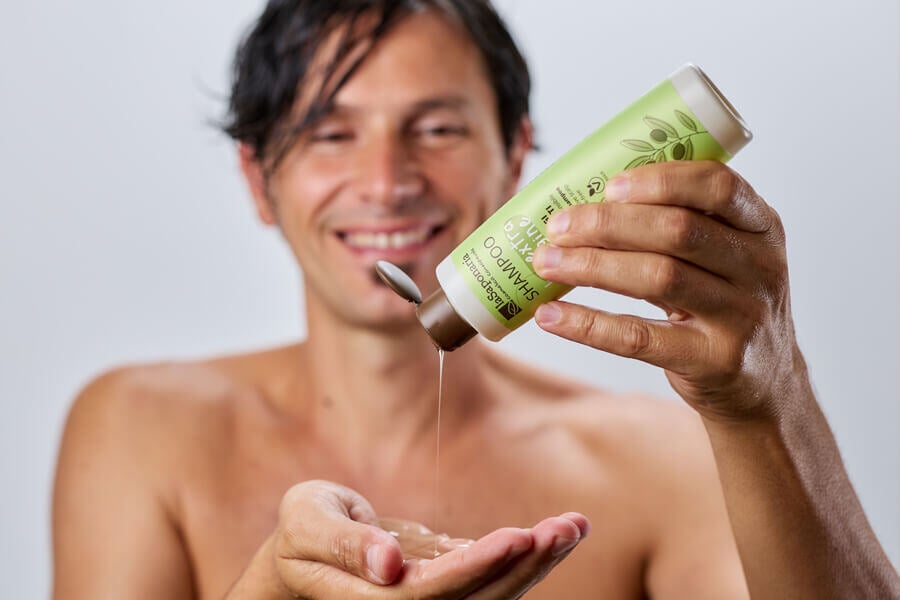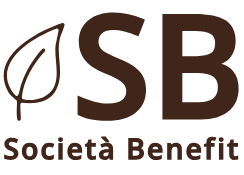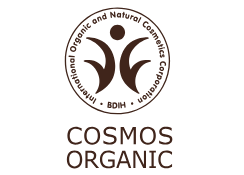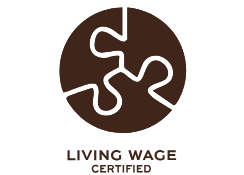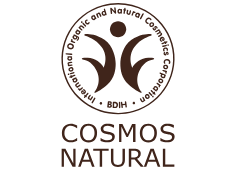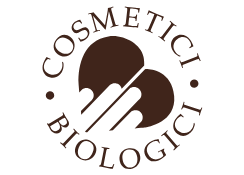The insights of La Saponaria
Safe sunscreens: here are the tests performed on the products
When it comes to sunscreens, for us at La Saponaria, safety is the top priority!
That's why every sunscreen that comes out of our laboratory is formulated with great care, in full respect of the skin and the environment. and is subjected to scrupulous tests which analyze its characteristics and performance, establishing its conformity with an unquestionable opinion.
'Osolebio: green and 100% safe formulas
Our Osolebio solar line is made with the best possible ingredients! How do we know? Because, after having thoroughly studied the regulations governing the placing on the market of sunscreens, we have dedicated ourselves to the meticulous research of the most effective sunscreens without however making any compromises regarding the well-being of our skin.
In fact, the sunscreens that are on the market can be of two types: chemical sunscreens and physical sunscreens.
Chemical sunscreens, also called organic filters, are synthetic substances that are able to absorb part of the UV radiation to prevent it from reaching and damaging the epithelial cells. Compared to physical filters, chemical sunscreens have a more comfortable application and are therefore easier to spread on the skin but, on the other hand, precisely because they capture solar energy, they can give rise to irritation, phototoxicity and sensitization.
Physical sunscreens, also known as inorganic filters, are shielding substances that act thanks to their opacity. Their modus operandi is very similar to that of a mirror: the mineral particles reflect UVA and UVB rays and prevent them from coming into contact with the skin and damaging it. Not only that, since they do not absorb solar energy, physical filters are particularly safe for skin health and the risk of incurring sensitization is much lower than chemical filters (to learn more about the characteristics and differences between chemical and physical sunscreens, you can click here).
For these reasons, we have chosen to use only the latest generation physical filters in the formulations of 'Osolebio sunscreens, excluding any petrochemical ingredient. Each recipe also contains precious protective plant extracts and antioxidants which enhance the effect of the product and take care of the skin, keeping it soft and hydrated.
What does the sun protection law provide?
Sunscreen products, like all cosmetics, are regulated by the European Cosmetics Regulation. However, this Regulation is not the only regulatory reference. In 2006, in fact, the European Commission published a "Recommendation on the efficacy of sunscreen products and the related indications" with the aim of clarifying this field and simplifying consumer choices, making the indications on the label of sunscreen products more uniform and simpler.
Let's see point by point the indications provided by the Recommendation on sunscreen products.
Information on indication, protection, precautions for use and instructions for use
The Recommendation specifies that:
- Sunscreen products must protect against both UVB and UVA rays and the UVA protection must be equal to at least 1/3 of the UVB one.
- The indication of protection from UVA rays must be indicated on the label with the symbol of a circle inside which the acronym UVA appears.
- Statements such as "full screen", "full protection" or other statements suggesting 100% protection from UV rays cannot be used on the label or on the packaging of the sunscreen.
- Statements such as "all day prevention" or others that suggest that reapplying is not necessary may not be used on the label or packaging of the sunscreen.
- On the packaging should be given advice on precautions to be taken in addition to the use of sunscreen products (such as not being exposed to the sun for too long) and instructions for use (how to apply the product before exposure and reapply it frequently).
Efficacy indications
According to the European document, indications relating to the effectiveness of sunscreens should be simple and clear. First, it is stated that the efficacy of sunscreen products should be labeled as low, medium, high and very high protection, accompanied by an indication of the sun protection factor value.
Furthermore, it is said that the multiplicity of numbers used on labels to indicate sun protection factors, the so-called SPF (from the English acronym, Sun Protection Factor), should be reduced and simplified according to the following classification:
|
Protection category to be indicated on the label |
Corresponding sun protection factor (SPF) value, to be reported on the label |
| Low protection | 6, 10 |
| Average protection | 15, 20, 25 |
| High protection | 30, 50 |
| Very high protection | 50+ |
The sun protection factor
A fundamental element that consumers have available when they have to choose a sunscreen is the so-called SPF value. It is a numerical value that indicates the ability of a product to protect the skin from UVB rays, responsible for the appearance of a tan but also for burns, redness and allergic reactions.
From a technical point of view, the SPF is defined as the ratio between the Minimum Erythematogenous Dose (MED) of the area protected by the product and the Minimum Erythematogenous Dose of the unprotected area of the same subject.
The higher the sun protection factor, the more UV light is needed to induce erythema on protected skin. For example, if we take a product with SPF 30 it means that the dose of UV required to develop a rash with protection is 30 times higher than without protection. The same reasoning applies to protection 50.
Therefore, the higher the SPF value, the higher the percentage of solar rays filtered by the product and the protection guaranteed to the skin.
All the tests to which the 'Osolebio
In order to guarantee safety and effectiveness, the sunscreen formulations have been subjected to rigorous tests carried out by external laboratories.
Specifically, the tests to which the products have been subjected for the verification and compliance of sun protection are:
- Patch test on sensitive skin
- Challenge test, a product self-preservation test
- Test to determine the sun protection factor SPF by applying the International Sun Protection Factor test method
- Test for verifying the conformity of the critical wavelength values
- Test for the determination of water resistance
Patch test on sensitive skin
The patch test evaluates the irritation potential of a given cosmetic on the skin, verifying that no harmful or unwanted effects are produced following application of the product under test on the skin.
Therefore the patch test helps to determine the tolerability of cosmetic products and reveals potential effects of irritation and allergic effects.
The Patch test is not part of the mandatory tests and is carried out voluntarily by companies and cosmetic houses to have an accurate assessment of the skin tolerability of the product.
The test is performed under medical supervision on at least 20 healthy volunteers with sensitive skin. The substances to be tested are applied under an occlusive condition to the skin in concentrations that do not represent a danger but sufficient to cause a reaction. The period of exposure to the product is 48h at the end of which the responses of the skin are evaluated, paying particular attention to the appearance of irritation phenomena such as, for example, erythema and edema.
A score is then assigned ranging from 0, which corresponds to no adverse reaction, and 4, assigned when the product gives rise to a serious reaction.
If the product obtains an acceptable average score, therefore as close as possible to zero, it can be stated on the label that this formulation is "dermatologically tested on sensitive skin" and therefore non-irritating.
Challenge test
The Challenge test allows you to evaluate the effectiveness of the preservative system of a cosmetic product. It is performed in the product development phase and can be defined as a real simulation of the microbiological stress to which a product is subjected during its 'life' from production, through storage and use by the final consumer.
According to the European Regulation on cosmetics, the result of the challenge test must be reported in the safety report and is therefore a mandatory test for all cosmetic products except those considered low risk. The conduct of the Challenge Test must be performed and validated by a microbiologist.
To perform this test, a preliminary evaluation of the product is carried out, aimed at excluding a previous contamination of the sample in question, and then we move on to the inoculation of microorganisms in the cosmetic. At regular time intervals - ranging from 24 hours to 28 days - the survival of the microorganisms is evaluated, which must remain within well-defined parameters indicated in the acceptability table.
Sun Protection Factor (SPF) Determination Test
The test for determining the sun protection factor was performed by applying the International Sun Protection Factor test method. This methodology studies the erythemic response of skin exposed to ultraviolet radiation (UV), obtained in the laboratory through the use of a sun simulator, with and without sunscreen.
As we have already mentioned, the SPF is evaluated through the MED (minimum erythematous dose), expressed as the amount of energy required to cause redness with clearly defined boundaries, which occurs 16 to 24 hours after exposure to radiation. The ratio between the MED on protected skin (application of the filter must have a concentration of 2mg/cm2) and that on unprotected skin indicates the numerical value of the SPF.
Test for the in vitro determination of UVA protection and "critical wavelength" values
For sunscreen products, a quantified minimum protection against UVA rays must be guaranteed, which increases in parallel with the sun protection factor.
The tests carried out measure the UVA protection and the critical wavelength values in vitro, fundamental data to demonstrate that the product is able to prevent the formation of sunburn on human skin and is active in the prevention of photoaging.
The test is based on a standardized test method (COLIPA Recomandation N°21 Labeling of sunscreen products with UVA protection claim) and demonstrates that the products being analyzed meet the safety standards and the declared protection and the ratio between UVA protection and UVB protection is at least 1/3.
Test for the determination of water resistance
A further analysis to evaluate the effectiveness of a solar product is that which determines its resistance to water. The test is performed in the laboratory on volunteers and involves measuring the sun protection factor before and after immersion in water. At this point, the percentage of persistence of the sunscreen is determined.
The test to determine water resistance was performed on all our sunscreens, with the exception of the spf 30 anti-aging protective face cream. In any case, we recommend reapplying the sunscreen frequently, especially after bathing.

Written by Simona
She is La Saponaria’s digital writer: always juggling a newsletter to send and a blog article to publish, she lovingly takes care of our social media channels and our e-commerce.



